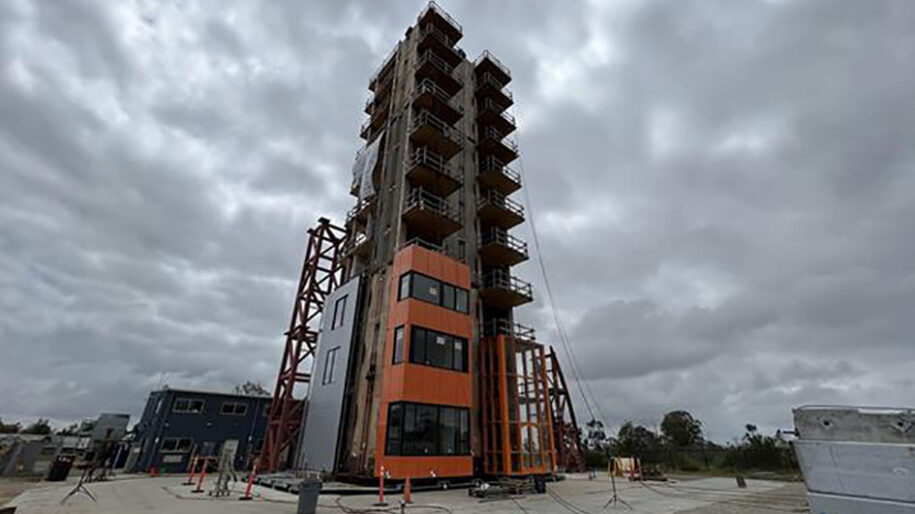RJC Engineers (RJC) is participating in the seismic testing of the Natural Hazards Engineering Research Infrastructure (NHERI) TallWood project in San Diego, California.
Funded by the National Science Foundation, the NHERI TallWood project aims to investigate mass timber buildings’ earthquake resilience by simulating large earthquakes on a 10-storey mass timber building, the tallest ever tested on a shake table.
The building includes three storeys of enclosure systems to assess their interaction with the structure to develop and validate seismic design methodology, while also researching the impact on building enclosure. This first-of-its-kind initiative is expected to transform sustainable building design, and reduce the carbon impact of the construction industry in Canada.
RJC will be studying the impact of the earthquake testing, ranging in magnitude from 4 to 8, on the integrity of windows, a critical component to the overall energy efficiency and safety of a building. Insights gleaned from the testing are particularly crucial in British Columbia, where new code changes require developers to commit to greenhouse gas intensity targets, with Canada as a whole currently targeting harmonized implementation by the 2030 code cycle.
“We are thrilled to be involved in testing the windows of the record-breaking NHERI TallWood project,” says Dennis Gam, principal, RJC Engineers. “The opportunity to observe testing of a potential future mass timber archetype and examine its influence on energy performance is a vital step forward in reducing the world’s carbon emissions.”
RJC’s participation in the NHERI TallWood project test is vital in furthering the understanding of the impact of seismic events on sustainable building design, in particular, in Canada.
The research will inform the possible need to alter the architectural detailing of a building enclosure, to assure resilient performance through natural building movements from use and seismic events, and will help pave the way for a more sustainable and resilient future that meets B.C. Energy Efficiency and Zero Carbon Step Code targets.









